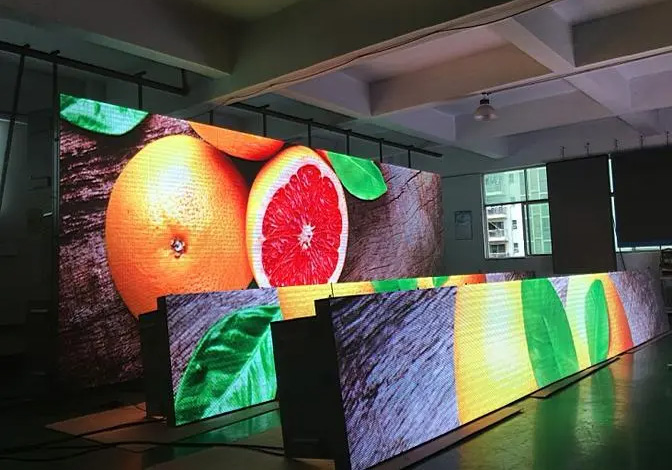Industry news
What do pixels, dot spacing, grayscale, etc. mean on an LED display screen?
1. LED brightness
The brightness of LED is generally expressed in Luminous Intensity, in Candela cd; 1000ucd (micro Candela)=1 mcd (milli Candela), 1000mcd=1 cd. The light intensity of a single LED used indoors is generally 500ucd-50 mcd, while the light intensity of a single LED used outdoors should generally be 100 mcd-1000 mcd, or even above 1000 mcd.
2. LED pixel module
LEDs are arranged into a matrix or pen segments, prefabricated into standard sized modules. The commonly used indoor LED display screens include 8 * 8 pixel modules and 8-character 7-segment digital modules. Outdoor LED display screen pixel modules come in specifications such as 4 * 4, 8 * 8, and 8 * 16 pixels. The pixel module used for outdoor display screens is also called a bundle module because each pixel is composed of two or more LED tube bundles.
3. Pixel and pixel diameter
Each LED emitting unit (point) in an LED display screen that can be individually controlled is called a pixel (or pixel). Pixel diameter Å refers to the diameter of each pixel, measured in millimeters.
For indoor display screens, generally one is a single LED with a circular shape. The commonly used pixel diameter calibration methods for indoor display screens include Φ 3.0, Φ 3.75, Φ 5.0, and Φ 8.0, among which Φ 3.75 and Φ 5.0 are the most common.
In outdoor environments, to increase brightness and visual range, one pixel contains more than two bundled LEDs; Due to the fact that two or more bundled LEDs are generally not circular, the pixel diameter of outdoor display screens is generally represented by the average distance between two pixels: PH10, PH11.5, PH16, PH22, PH25.

4. Point spacing, pixel density, and information capacity
Centre-to-centre distance or Dot Pitch of two or two pixels of LED display screen; The number of pixels per unit area is called pixel density; The amount of displayed content per unit area is called information capacity. These three essentially describe the same concept: point spacing reflects pixel density from the distance between two pixels, and point spacing and pixel density are the physical properties of a display screen; Information capacity is the unit of information carrying capacity of pixel density. The smaller the dot spacing, the higher the pixel density, the more information capacity, and the closer the suitable viewing distance. The larger the dot spacing, the lower the pixel density, the less information capacity, and the farther the suitable viewing distance.
5. Resolution
The number of rows and columns of pixels in an LED display screen is called the resolution of the LED display screen. Resolution is the total number of pixels in a display screen, which determines the information capacity of a display screen.
6. LED Panel
Assemble and arrange the LED pixel modules into a matrix according to their actual size, equipped with a dedicated display driver circuit, DC stabilized power supply, software, framework, and exterior decoration, to form an LED display screen.
7. Grayscale
Grayscale refers to the degree to which the brightness of a pixel changes, and the grayscale of a basic color is generally 8